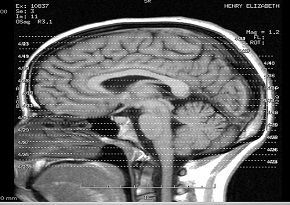Study examines outcomes of blood-pressure control for diabetes and coronary artery disease patients

Patients with hypertension, diabetes and coronary artery disease who maintained their systolic blood pressure at less than 130 mm Hg did not have improved cardiovascular outcomes compared to patients with usual blood pressure control, according to a study in the July 7 issue of JAMA.
"Hypertension guidelines advocate treating systolic blood pressure (BP) to less than 130 mm Hg for patients with diabetes mellitus; however, data are lacking for the growing population who also have coronary artery disease (CAD)," according to background information in the article.
Rhonda M. Cooper-DeHoff, Pharm.D., M.S., of the University of Florida, Gainesville, and colleagues examined whether patients with hypertension, diabetes and CAD who achieved systolic BP of less than 130 mm Hg would have a reduced risk of cardiovascular events compared with those who managed to keep their systolic BP within the range of at least 130 mm Hg to less than 140 mm Hg. The analysis included 6,400 of the 22,576 participants in the International Verapamil SR-Trandolapril Study (INVEST). For this analysis, participants were at least 50 years old and had diabetes and CAD. Participants were recruited between September 1997 and December 2000 from 862 sites in 14 countries and were followed up through March 2003, with an extended follow-up through August 2008 through the National Death index for U.S. participants.
Patients received treatment with either a calcium antagonist or beta-blocker followed by angiotensin-converting enzyme inhibitor, a diuretic, or both to achieve systolic BP of less than 130 and diastolic BP of less than 85 mm Hg. Patients were categorized as having tight control if they could maintain their systolic BP at less than 130 mm Hg; usual control if systolic BP ranged from 130 mm Hg to less than 140 mm Hg; and uncontrolled if systolic BP was 140 mm Hg or higher. The primary outcome included the occurrence of all-cause death, nonfatal myocardial infarction (heart attack), or nonfatal stroke.
The primary outcome occurred in 12.7 percent (286 patients) of those in the tight-control group, 12.6 percent (249 patients) of the usual-control group, and 19.8 percent (431 patients) of the uncontrolled groups. When evaluating all-cause mortality for the entire follow-up period, after adjustment, risk of all-cause mortality was significantly greater in the tight-control group (22.8 percent) than in the usual-control group (21.8 percent).
"In this observational study, we have shown for the first time, to our knowledge, that decreasing systolic BP to lower than 130 mm Hg in patients with diabetes and CAD was not associated with further reduction in morbidity beyond that associated with systolic BP lower than 140 mm Hg, and, in fact, was associated with an increase in risk of all-cause mortality. Moreover, the increased mortality risk persisted over the long term," the authors write.
"At this time, there is no compelling evidence to indicate that lowering systolic BP below 130 mm Hg is beneficial for patients with diabetes; thus, emphasis should be placed on maintaining systolic BP between 130 and 139 mm Hg while focusing on weight loss, healthful eating, and other manifestations of cardiovascular morbidity to further reduce long-term cardiovascular risk."



























